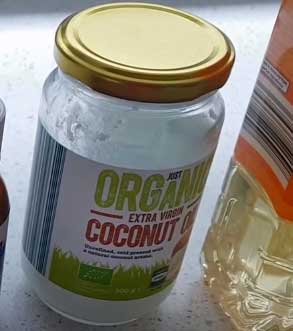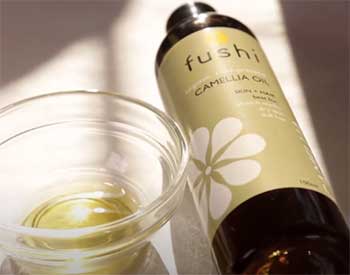Lampe Berger lamps have been around since 1898 and are known for using a unique oil to fragrance and purify air. However, the proprietary Lampe Berger oil can be quite expensive. Are there more affordable and accessible alternatives that provide the same benefits?
In this detailed guide, we’ll explore various Lampe Berger oil alternatives, looking at their pros, cons, and how they compare. We’ll cover essential oils, fragrance oils, vegetable oils, and other options so you can find the best substitute for your needs.
Alternatives To Lampe Berger Oil
Here is a list of those alternatives:
- Essential Oils
- Fragrance Oils
- Vegetable Oil
- Coconut Oil
- Mineral Oil
- Other Plant-Based Oils
- Soybean Oil
- Sunflower Oil
- Camellia Oil
Let’s talk about them in detail.
Essential Oils
Essential oils are a popular Lampe Berger oil alternative because they offer natural fragrance options.
Pros:

- Derived from plants, offering natural fragrances
- Available in many scents like lavender, eucalyptus, lemon, and more
- Often affordable, costing just a few dollars per bottle
- Readily available from health stores, online vendors, etc.
Cons:
- Need to use a carrier oil like vegetable oil as most essential oils can’t be burned directly
- Fragrance strength and burn time can vary based on the oil blend
- Some trial and error needed to find the right oil combinations
To use essential oils, you’ll need to create a blend with a carrier oil to thin out the viscosity. Good carrier oils include fracctionated coconut oil, grapeseed oil, sweet almond oil, and vegetable oil. A typical ratio is 20-30 drops of essential oil per 1 cup of carrier oil.
Popular essential oil scent options include:
- Lavender – relaxing and insomnia aid
- Lemon – uplifting and bright
- Peppermint – improves concentration
- Eucalyptus – clears nasal congestion
- Tea tree – air purifying
Always source 100% pure therapeutic-grade essential oils from reputable suppliers. Lower grade oils can have synthetic additives or impurities that make them unsafe to burn.
Fragrance Oils
Fragrance oils offer concentrated, long-lasting scented oil options.
Pros:
- Come in a huge variety of scents
- Scents are bold and long-lasting
- Often affordable at $5-10 per ounce
- Readily available online and from craft stores
Cons:
- Chemically-based synthetic fragrances
- May need to experiment to find optimal amount for burn time
- Can smell more artificial than essential oils
Popular fragrance oil scents include floral, bakery, fruit, musk, woodsy, herbal, spicy, and green scents. Avoid fragrance oils labeled “not for burning” and always check reviews first for burn performance. Use a toothpick to gradually add small amounts of fragrance oil to your carrier oil to find the right concentration.
Vegetable Oil
Plain vegetable oil is another easy Lampe Berger oil substitute.
Pros:
- Very affordable at around $2-3 per bottle
- Readily available at any grocery store
- Odorless allowing pure fragrance from oils
Cons:
- No fragrance on its own
- Needs essential or fragrance oils added for scent
Use a refined, odorless vegetable oil for the best results. Good options include canola, sunflower, corn, or grapeseed oil. Avoid vegetable oils with strong scents like olive oil. Start with a ratio of 1 cup vegetable oil to 30 drops of essential or fragrance oil. Adjust to your preferences.
Coconut Oil

Coconut oil is growing in popularity for oil lamps.
Pros:
- Affordable and accessible
- Provides a light coconut fragrance
- Natural oil option
Cons:
- Coconut scent may not suit all preferences
- Needs essential oils added for stronger scents
Use refined coconut oil which has no scent or flavor.
Make sure it’s liquid at room temperature or melt solid coconut oil before pouring into the lamp. Pair it with complementary essential oils like vanilla or spice scents.
Mineral Oil
Mineral oil is an odorless, affordable option.
Pros:
- Very affordable, usually under $5 per bottle
- Odorless and won’t interfere with scents
Cons:
- Petroleum-based, not as natural as plant oils
- Needs added fragrance oils or essential oils
Check that the mineral oil is food-grade or lamp grade for safety. Avoid technical grades with impurities. Start with a ratio of 1 cup mineral oil to 1 ounce of fragrance or essential oils until you find the right concentration.
Other Plant-Based Oils
There are many other plant-based oils that can work in Lampe Berger lamps:
- Almond oil
- Olive oil
- Jojoba oil
- Avocado oil
- Apricot kernel oil
- Grapeseed oil
- Sesame oil
Pros:
- Offer natural oil options
- Various scent profiles from nutty to herbal
Cons:
- Can have heavy or bitter scents
- Lower smoke points – may clog lamp
Look for refined versions of these oils that have less scent. Prefer oils with high smoke points over 400°F like avocado, grapeseed, and sesame to prevent clogging issues.
Soybean Oil
Soybean oil is a vegetable oil that can work well in Lampe Berger lamps.
Pros:
- Affordable and readily available
- High smoke point of 460°F helps prevent clogging
- Neutral odor doesn’t interfere with scents
Cons:
- Thick viscosity may need dilution for optimal performance
- Needs added essential oils or fragrance for scent
Look for a refined soybean oil which has a near odorless and flavorless profile. You can dilute it with a carrier oil like fractionated coconut oil if the viscosity is too thick. Start with a blend of 1 cup soybean oil to 1/4 cup carrier oil and experiment with essential oil mixes from there.
Sunflower Oil
Sunflower oil is gaining popularity as a fuel for oil lamps.
Pros:
- Affordable at around $5 per 16oz bottle
- Light, neutral scent
- High smoke point of 440°F
Cons:
- Needs secondary fragrance like essential oils added
- Can have slightly nutty aroma
Use a refined sunflower oil for the most neutral odor. Sunflower pairs nicely with essential oils like lemon, rosemary, and tea tree. Make test blends starting with a 1:30 ratio of sunflower oil to essential oils. Adjust wick height for best performance.
Camellia Oil
Camellia oil, also known as tea seed oil, is a versatile option.
Pros:

- Provides slight floral aroma
- Absorbs easily without greasy residue
- High smoke point of 252–260°C
Cons:
- More expensive than other options at $15–20 per bottle
- Light scent fades quickly
Look for food grade camellia oil. Its ultra-light feel makes it easy to add complementary essential oils without becoming too viscous. Start with a 1:10 camellia oil to essential oils ratio. Camellia oil pairs nicely with citrus and herbal essential oil scents.
Why Look For Alternatives?
There are a few key reasons why consumers may want an alternative oil for their Lampe Berger:
- Cost – Proprietary Lampe Berger oil can cost $30 or more for a 250mL bottle. Alternatives are often much cheaper.
- Accessibility – Lampe Berger oil may not be available locally for everyone. Alternative oils can be sourced from many vendors.
- Fragrance options – Lampe Berger oils come in limited scents. Alternatives offer many more fragrance choices.
- Natural preferences – Some consumers prefer more natural oil options, like essential oils.
While Lampe Berger oil is specially formulated for these lamps, alternative oils can provide similar benefits. It’s also easy to experiment to find the right oil for your needs and preferences.
How Do These Alternatives Compare To Lampe Berger Oil?
The proprietary Lampe Berger oil is specially engineered to diffuse scent efficiently, avoid clogging, and provide optimum burn time. It’s also bottled at a viscosity optimized for Lampe Berger lamps.
Alternative oils may not diffuse scent as effectively or burn as long. You’ll likely need to experiment with wick height and oil blends to prevent clogging and achieve the desired fragrance level and burn time.
However, with some adjustments, you can achieve excellent results with alternative oils at a fraction of the cost. Just be prepared for some trial and error. Record what works to recreate your perfect oil blend.
Frequently Asked Questions (FAQ)
Yes, Lampe Berger lamps are designed to burn oil to disperse fragrance, so many oils can be used. The key is finding an oil with the right viscosity and flashpoint to avoid clogs and safety issues. Oils like vegetable oil, mineral oil, and coconut oil have appropriate properties when blended properly with essential oils and fragrances.
Research shows Lampe Berger lamps do help purify air to an extent. The high heat burns off odors, allergens, and some microbes. And essential oils like tea tree oil have antibacterial properties when diffused. However, Lampe Berger lamps don’t filter out particles like air purifiers. The air purification benefits are limited compared to advanced HEPA filtration systems.
Yes, you can add essential oils to Lampe Berger oil or use as part of an oil blend. First, choose a carrier oil like vegetable oil or coconut oil. Test ratios starting with 20-30 drops of essential oil per cup of carrier. Make sure to use 100% pure therapeutic-grade essential oil. Lower grades could contain additives unsafe to burn.
You can use essential oils in oil lamps safely as long as they are diluted into a carrier oil. Oils like olive, coconut, and grapeseed work well to create an essential oil blend for lamps. Test different ratios to find the mixture that provides the best fragrance diffusion and burn time. Always trim wicks to the proper height and watch carefully to prevent issues.
Final Thoughts
Lampe Berger lamps are beautiful, effective fragrance diffusers. But there’s no need to spend a fortune on their proprietary oils when many high quality, affordable alternatives exist.
With this detailed guide of the pros and cons of various oil options, you can experiment confidently to create signature oil blends with your favorite scents. Remember to adjust wick heights and oil viscosity until you achieve the perfect results.
The key is finding an oil or blend that avoids clogging, burns efficiently, and diffusion your preferred fragrance to refresh and beautify your space. Get ready to enjoy beautiful Lampe Berger ambiance at a fraction of the cost.

Great article! Lampe Berger oils are very expensive. Please tell me which oil you use. You have done the trials so please tell me which ones I should avoid. What burning temperature do you suggest I buy, high or low?
I’m glad I found your article. As you mentioned, Lampe Berger oil is very expensive!!
Thank you very much!
Bonnie, Québec City, Canada